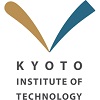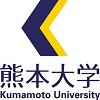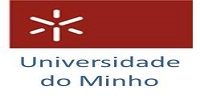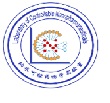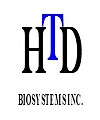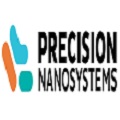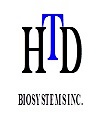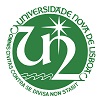Day 2 :
Keynote Forum
Irach B Taraporewala
Sitara Pharmaceutical Group, USA
Keynote: Drug Delivery to the Posterior Segment of the Eye- The Challenges and the Solutions
Time : 09:00-09:25

Biography:
Irach B. Taraporewala has over 30 years’ experiece in drug discovery/drug development R&D. He currently is President of the Sitara Pharmaceutical Consulting Group. He previously served as founder, CEO, President and Chief Technology Officer, and on the Board of Directors of OHR Pharmaceutical, Inc. an ophthalmology drug development company, and as a Drug Development consultant at PAREXEL Consulting. Dr. Taraporewala has published papers in drug development and delivery in reputed journals and has lectured extensively. He received a Ph.D. in Medicinal Chemistry from the Philadelpjhia College of Pharmacy and Science, and has been Principal Investigator on several NIH/DoD biomedical research grants.
Abstract:
With the aging population and the global increase in the incidence of diabetes, chronic diseases of the posterior segment of the eye are becoming increasingly prevalent. Treatment of disorders such as age-related macular degeneration (AMD), diabetic retinopathy, macular edema and uveitis require the effective and reliable delivery of a drug molecule into the choroid and retinal tissue layers in the eye’s posterior segment. Because of the numerous natural barriers to a drug molecule’s entry into the interior of the eye, this is often a challeging proposoition. A number of drug substance classes with vastly different physicochemical properties are being developed to treat such disorders, including small molecule, polypeptides, monoclonal antibodies and oligonucleotide aptamers. With these advances comes the need to develop new drug delivery technologies to achieve sustained therapeutic levels of drug in the target ocular tissues. The presentation will review the current state of drug delivery and recent advances in this area. Both approaches of novel drug formulation methodologies and medical device development are being utilized for the purpose. Use of formulation additives, nanoparticle, microparticle and liposomal approaches are being increasingly developed, as are new types of implantable and injected medical devices that provide for successful elution of therapeutic levels of drug substances into the choroid and retina. These advances are likely to impact the future of drug development for the effective management of ocular diseases of the posterior segment.
Keynote Forum
Joe Jensen
NOBLE , USA
Keynote: Patient centric onboarding: How device trainers increase compliance
Time : 09:25-09:50

Biography:
Joe Jensen is the director of marketing for Noble, an award-winning multisensory product development company for the world’s leading pharmaceutical brands. Noble develops educational and training solutions to improve the lives of patients who self-administer drug delivery device therapies, such as auto injectors, prefilled syringes, or metered dose inhalers.rnrnJensen has a BSBA in Marketing from the University of Florida, and an MBA from Nova Southeastern University. In addition to Noble, Jensen has had the privilege to teach up-and-coming business professionals at two universities, Nova Southeastern University and Lake Sumter State College.
Abstract:
Pharmaceutical companies can combat inconsistent patient training, non-compliance and low adherence is by offering device training and onboarding tools to their patients. Training devices can assist in minimizing common issues seen in patients, such as needle anxiety, injection angle and injection depth among others. To determine the link between device training and patient compliance a survey was conducted consisting of 721 patients. The study investigated whether or not compliance differed between patients who trained with a needleless training device versus those who did not train with a needleless training devices results from the survey found that 61 percent of patients do not thoroughly read the IFU; this is alarming as more than half of patients are simply not reading all of the instructions and are instead relying on demonstrations by HCPs which can be inconsistent or easily forgotten once the patient is in the everyday home environment. Building better tools requires a deeper knowledge of how patients learn, combined with an improved understanding of patients emotional and behavior patterns that occur after the point of diagnosis. Device training can help decrease user error, increase on-boarding confidence, and reduce HCP training times. Proper device training and educational products can help teach patients in the absence of HCPs. Injection training devices and even available to incorporate based on the needs of the brand and needs of patients. Incorporating these types of methods can increase the retention and recall of messages.
Keynote Forum
Subhash C Chauhan
University of Tennessee Health Science Center, USA
Keynote: Development of new therapeutic approaches for pancreatic cancer treatment
Time : 09:50-10:15

Biography:
Chauhan has completed his PhD at the age of 27 years from Central Drug Research Institute (CDRI), Lucknow, India and recieved postdoctoral training from University of Nebraska Medical Center (UNMC), Omaha, NE.. Currently he is serving as a Professor of Pharmaceutical sciences at Yniversity of Tennessee Health Science Center (UTHSC), Memphis, TN, a premier educational institution. He has published more than 85 papers in reputed journals and has been serving as an editorial board member for sevral journals of international repute.
Abstract:
Pancreatic cancer (PanCa), is the fourth leading cause of cancer related deaths in the United States due to the lack of early diagnosis and poor response to available therapeutics. Thus, identification of newer therapeutic approaches that can aid current therapeutics is highly desirable. We have defined multidimensional roles of MUC13 mucin in the pathogenesis and therapeutics/imaging of PanCa. We have reported that MUC13 is highly expressed in human pancreatic tumors but not in normal pancreas and its expression progressively increases with disease stage and metastasis. MUC13 enhances tumorigenesis through modulation of multiple oncogenes (HER2, PAK1, ERK, metastasin/S100A4, TERT, sonic hedgehog (SHH), GATA-1) associated with tumorigenesis/metastasis and desmoplasia. We have also observed a functional interaction of MUC13 and HER2 in PanCa cells and identified miR-145 as a tumor suppressor and a novel regulator of MUC13 in PanCa. Additionally, we have identified drugs that inhibit tumor desmoplasia (targets SHH pathway) and enhances therapeutic response of gemcitabine, thus, can be of therapeutic benefit for PanCa. Moreover, we have generated unique anti-MUC13 mouse monoclonal (MAb) and recombinant humanized (HuAb) antibodies that can efficiently target pancreatic tumors. Furthermore, we have successfully generated multiple patented nanoparticle formulations for antibody guided tumor specific targeted drug delivery and imaging. Taken together, our data suggest a crucial role of MUC13 in PanCa pathogenesis. Utilization of a novel anti-MUC13 monoclonal antibody can be used for the targeted tumor specific delivery of novel nanoparticle formulations in pancreatic tumors. This research will establish the multifaceted role of MUC13 in pathogenesis of PanCa and advance diagnosis and therapy of PanCa to reduce the morbidity and mortality caused by this devastating disease.
- Track 4: Pharmaceutical Nanotechnology
Track 5: Nucleic Acid Based Drug Delivery
Track 7: Vaccine Design and Delivery Technology
Location: Crowne Plaza New Orleans Airport
Session Introduction
Kristen K Comfort
University of Dayton, USA
Title: The ability of physiological variables to modulate nanomaterial behavior is an emerging concern for nano-based drug delivery techniques

Biography:
Kristen Comfort obtained her Ph.D. in Chemical Engineering from North Carolina State University and completed her postdoctoral studies as a National Research Council fellow with the Air Force Research Laboratories at Wright Patterson Air Force Base. She is currently an Assistant Professor of Chemical Engineering and is serving as the Director of the graduate BioEngineering program. Dr. Comfort’s research focus is on the evaluation of nanomaterial behavior and subsequent biological responses in enhanced in vitro environments; an area in which she currently has over 15 publications, many of which in high impact journals.
Abstract:
Colloidal gold nanoparticles (AuNPs) are being increasingly utilized in biomedical applications, such as drug/gene delivery and bio-imaging techniques. However, the effectiveness of these procedures are highly dependent upon sustained, strong interactions between AuNPs and the surrounding environment; referred to as the nano-bio interface. Recently, it has been established that this interface is reliant on the formation of a protein-NP complex. The protein corona surrounding NPs is dynamic by nature and is dependent upon numerous factors including the environmental composition and specific physicochemical properties of the particles. However, little is currently known about how physiological variables, such as fluid flow and biological fluids outside of blood, modulate the protein-NP complex and subsequent particokinetics. We demonstrated that the addition of shear stress, introduced through dynamic fluid movement within the cellular system, severely disrupted the AuNP protein corona, resulting in an altered nano-bio interface and AuNP deposition efficiency. As drug/gene delivery require high AuNP delivery to a target, this loss of NP transport potential highlights a current limitation within the field. Moreover, circulating NPs have a strong likelihood of encountering multiple physiological environments, such as interstitial and lysosomal fluids; of which the influence on the nano-bio interface has yet to be explored. We determined that when dispersed in these biological fluids, both the protein corona and the deposited AuNP dose was altered; as a function of original surface chemistry. Given these results, it was clear that physiologically variables should be accounted for during design and evaluation of nano-based drug delivery systems.

Biography:
Kazuya Kikuchi graduated from the PhD course of the University of Tokyo (Japan) in 1994 and did his postdoctoral training at UCSD and the Scripps Research Institute. He was appointed as a research associate at the University of Tokyo (Japan) thereafter and promoted to associate professor. He was appointed as a full professor at Osaka University in 2005. During these period he became involved in molecular imaging probes development for both fluorescence imaging and magnetic resonance imaging. He is focused both in in vivo imaging and single molecule cellular imaging.
Abstract:
MRI (Magnetic Resonance Imaging) has been clinically used since it yields images of deep regions in living animal bodies. We have focused on 19F MRI. 19F MRI is suitable for monitoring particular signals concerning biological phenomena because 19F MRI shows little endogenous background signals. Thus, 19F MRI probes that can visualize biological functions have been increasingly reported. We have developed the 19F MRI probes to detect protease activity and gene expression on the basis of paramagnetic resonance enhancement (PRE) effect. We also have developed a novel 19F MRI contrast agent, fluorine accumulated silica nanoparticle for MRI contrast enhancement, which is composed of a perfluorocarbon core and a robust silica shell. Multifunctional mesoporous silica nanoparticles (MSNs) are good candidates for multimodal applications in drug delivery, bioimaging, and cell targeting. A novel drug delivery carrier based on MSNs, which encapsulated highly sensitive 19F magnetic resonance imaging (MRI) contrast agents inside MSNs, will be introduced. The nanoparticles were labeled with fluorescent dyes and functionalized with small molecule-based ligands for active targeting. This drug delivery system facilitated the monitoring of the biodistribution of the drug carrier by dual modal imaging (NIR/19F MRI). Furthermore, we demonstrated targeted drug delivery and cellular imaging by the conjugation of nanoparticles with folicacid. An anticancer drug (doxorubicin, DOX) was loaded in the pores of folate-functionalized MSNs for intracellular drug delivery. The release rates of DOX from the nanoparticles increased under acidic conditions, and were favorable for controlled drug release to cancer cells.

Biography:
Noha Nafee is Assistant Professor, Department of Pharmaceutics, Faculty of Pharmacy, Alexandria University, Alexandria, Egypt, where she got her Bachelor and Master degree in Pharmaceutical Sciences. In 2004, she was awarded a 2-years DAAD doctoral scholarship in the Department of Biopharmaceutics and Pharmaceutical Technology, Saarland University, Saarbruecken, Germany, where she received her PhD degree (2008), followed by an Alexander von Humboldt post-doctoral fellowship in the Department of Pharmaceutical Technology and Biopharmacy, Marburg University, Marburg, Germany (2012-2014). Prof. Nafee has published 23 research papers in peer-reviewed journals (h-index 10 and >600 citations).
Abstract:
Hepatocellular carcinoma (HCC) is the third most common cause of cancer death worldwide. Epirubicin (EPI), an anthracycline derivative, is one of the main line treatments for HCC. However, serious side effects including cardiomyopathy and congestive heart failure limit its long term administration. Our main goal is to develop a delivery strategy that ensures improved efficacy of the chemotherapeutic agent together with reduced cardiotoxicity. In this context, EPI was loaded in chitosan-PLGA nanoparticles linked with asialofetuin (EPI-NPs) selectively targeting hepatocytes. In an attempt to reduce cardiotoxicity, targeted EPI-NPs were coadministered with tocotrienols. EPI-NPs significantly enhanced the antiproliferative effect compared to free EPI as studied on Hep G2 cell line. Nanoencapsulated EPI injected in HCC mouse model revealed higher p53-mediated apoptosis and reduced angiogenesis in the tumor. Combined therapy of EPI-NPs with tocotrienols further enhanced apoptosis and reduced VEGF level in a dose dependent manner. Assessment of cardiotoxicity indicated that EPI-NPs diminished the high level of proinflammatory cytokine tumor necrosis factor-α (TNF-α) as well as oxidative stress-induced cardiotoxicity as manifested by reduced level of lipid peroxidation products (TBARS) and nitric oxide (NO). EPI-NPs additionally restored the diminished level of superoxide dismutase (SOD) and reduced glutathione (GSH) in the heart. Interestingly, tocotrienols provided both antitumor activity and higher protection against oxidative stress and inflammation induced by EPI in the heart. This hepatocyte-targeted biodegradable nanoparticle/tocotrienol combined therapy represents intriguing therapeutic strategy for EPI providing not only superior efficacy but also higher safety levels.
Hajime Mori
Kyoto Institute of Technology, Japan
Title: Insect virus-derived protein microcrystals for slow-release carriers of functional proteins
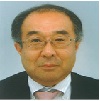
Biography:
Hajime Mori has completed his PhD at the age of 26 years from Nagoya University and postdoctoral studies from The National Institute of Agrobiological Sciences. He is a trustee and vice-president, and also professor of Kyoto Institute of Technology. He has published more than 90 papers in reputed journals and has been serving as the editor of Journal of Insect Biotechnology and Sericology.
Abstract:
Micron-sized proteinaceous particles called polyhedra are the main vectors by which virus particles transfer from insect to insect. Polyhedra also stabilize virions thereby allowing them to remain viable for long periods in the environment. We developed two targeting strategies for the encapsulation of foreign proteins into polyhedra. Diverse foreign proteins can be encapsulated into polyhedra by fusing a polyhedron-targeting tag sequence at the C- or N-terminus of the foreign proteins. The remarkable stability of polyhedra is thought to be applied on slow-release carriers of cytokines and other proteins for tissue engineering or vaccination. Under physiological conditions, polyhedral microcrystals are inert and insoluble. These properties allow us to employ polyhedra as versatile micron-sized carriers. Polyhedra encapsulating bone morphogenetic protein-2 (BMP-2) enhanced chondrogenic and osteogenic differentiation of progenitor ATDC5 cells. Absorbable collagen sponge (ACS) impregnated with BMP-2 polyhedra had enough osteogenic activity to promote complete healing in critical-sized bone defects, but ACS with a high dose of rhBMP-2 showed incomplete bone healing, indicating that BMP-2 polyhedra promise to advance the state of the art of bone healing. Angiogenesis was promoted by polyhedra encapsulating vascular endothelial growth factor. Endostatin-encapsulated polyhedra showed potent anti-endothelial activity, indicating that they may have promise for the treatment of squamous cell carcinoma by inhibiting tumors angiogenesis. Polyhedra show properties of stabilization, retention, and long release which are very important for drug delivery systems, and therefore I would like to establish optimal protocols including dosage and scheduling for tissue engineering or antiangiogenic therapy.
Adriana Avila Flores
Auburn University, USA
Title: Branched amphiphilic cationic oligo-peptides for delivery of HPV-16 DNA vaccines

Biography:
Avila completed her Ph.D. in Biochemistry and Molecular Biophysics at Kansas State University in four years. Her thesis work focused on developing a method to deliver genes into cells using peptide nano-spheres. Currently she is a research associate at Auburn University working in the field of drug delivery and microfluidics. She helped to establish a biotechnology company, Genetadi Biotech SL, in Bilbao, Spain from 2008 to 2010 (before start graduate school) and she had been a founding partner since that year. she had published five research papers and one review article (corresponding author in the review). Presently she is serving as a co-chair for the Gordon Research Seminar in Cancer Nanotechnology.
Abstract:
Recently, peptides have shown potential as a new family for gene carriers. Peptides are easy to synthesize, quite stable and expected to produce minimally immunogenic and inflammatory responses. We recently reported on a new class of branched amphiphilic peptides that self-assemble into extremely stable nano-spheres. The Branched Amphiphilic Peptides Capsules (BAPCs) display a uniform size of 20-30 nm and are resistant to detergents, proteases and chaotropes. Comparable to how histones compact DNA to form nucleosomes, the 20- 30 nm BAPCs interact with plasmid DNA acting as a cationic nucleation centers with the negatively charged DNA coating the outer surface, generating peptide-DNA nanoparticles with sizes ranging between 50-250 nm. The BAPCs-DNA nanoparticles are capable of delivering plasmid DNA of different size into cells in culture, yielding high transfection rates and minimal cytotoxicity. Furthermore, BAPCs were tested for in vivo delivery of a DNA vaccine previously designed to activate immune responses and capable of controlling tumors induced by type 16 human papilloma virus (HPV-16). The BAPCs-DNA nanoparticles enhanced the vaccine-induced antitumor protection and promoted efficient activation of murine dendritic cells without significant toxic effects. Together these results demonstrate that the interaction of double stranded DNA to branched amphiphilic oligo-peptides nanoparticles represents a promising new in vitro and in vivo non-viral gene delivery system.

Biography:
Shashi Ravi Suman Rudrangi, MRSC, is a Formulation Research and Development Scientist at Bristol Laboratories, United Kingdom. He previously worked as a Research Associate at the Medway Centre for Pharmaceutical Sciences, University of Greenwich, UK. He pursued his Bachelor's degree in Pharmacy from Kakatiya University, India in 2008; his Masters and PhD degrees in Pharmaceutical Science at the University of Greenwich in 2010 and 2015, respectively. He works on the ‘Inclusion complexation of poorly soluble drugs with cyclodextrins’ using organic solvent-free supercritical carbon dioxide processing method. He is a Member of the Royal Society of Chemistry, UK; Member of the Academy of Pharmaceutical Sciences Great Britain, UK and a Life Member, Chemical Research Society of India. He is the current Chair of the Student Association of the Academy of Pharmaceutical Sciences, Great Britain.
Abstract:
The purpose of this study was to evaluate a single-step, organic solvent-free supercritical fluid process for the preparation of olanzapine-methyl-β-cyclodextrin complexes with an express goal to enhance the dissolution properties of olanzapine. The complexes were prepared by supercritical carbon dioxide processing, co-evaporation, freeze drying and physical mixing. The prepared complexes were then analyzed by differential scanning calorimetry, X-ray powder diffraction, scanning electron microscopy, solubility and dissolution studies. Computational molecular docking studies were performed to study the formation of molecular inclusion complexation of olanzapine with methyl-β-cyclodextrin. All the binary mixtures of olanzapine with methyl-β-cyclodextrin, except physical mixture, exhibited a faster and greater extent of drug dissolution than the drug alone. Products obtained by the supercritical carbon dioxide processing method exhibited the highest apparent drug dissolution. The characterization by different analytical techniques suggests complete complexation or amorphisation of olanzapine and methyl-β-cyclodextrin complexes prepared by supercritical carbon dioxide processing method. Therefore, organic solvent-free supercritical carbon dioxide processing method proved to be novel and efficient for the preparation of solid inclusion complexes of olanzapine with methyl-β-cyclodextrin. The preliminary data also suggests that the complexes of olanzapine with methyl-β-cyclodextrin will lead to better therapeutic efficacy due to better solubility and dissolution properties.
Philippe Bertrand
University of Poitiers, France
Title: Delivery of epigenetic drugs against asbestos cancer

Biography:
Philippe Bertrand obtained his PhD in 1992 at Poitiers University, developing asymmetric synthesis from the chiral pool. He worked on alkaloid hydroxylation in superacids during his post-doctoral research from 1992 until 1995. He obtained a lecturer position in Poitiers to develop asymmetric synthesis of anticancer com-pounds. He started to work on epigenetics in 2004, developing synthetic methods to access epigenetic inhibitors and their use in delivery systems for therapeutic or imaging purposes.
Abstract:
Several aggressive cancers such as the asbestos cancer are not correctly treated with conventional drugs. New therapeutic strategies include epigenetic modulators able to stop cancer cell growth by renormalization of their epigenetic landscape leading to apoptosis. As this epigenetic renormalization requires hours to be effective and because epigenetic drugs have short half live, the use of delivery systems is especially suited to improve the therapeutic efficacy of epigenetic treatments. We present our results in this particular application of drug delivery systems. The delivery systems presented is based on polymeric nanoparticles prepared by Ring-Opening Metathesis Polymerization (ROMP). Each macromonomer can be functionalized to access a library of functional macromonomers that are the copolymerized to generate (multi)functional 300 nm sized nanoparticles. This system is able to selectively accumulate in the tumours in subcutaneous or peritoneal mice models. The epigenetic drugs are covalently loaded and released inside cancer cells after internalization through acidic vesicles. This intracellular delivery leads to an increase of histone acetylation in the nucleus due to the delivery of inhbiitors of histone deacetylases, the biological target in our strategy. The particles are not detected in other organs as well as the epigenetic effect, indicating the highly selective effect of our strategy. In a peritoneal mice model of asbestos cancer, 80% of tumor reduction was obtained when the free compounds gave no results.
Ulo Langel
Stockholm University, Sweden
Title: Transfection by cell-penetrating peptides based on transportans

Biography:
Ülo Langel is a Professor at the Department of Neurochemistry, Stockholm University, and at the Institute of Technology, Tartu University. Prof. Langel has been selected as a Fellow Member of International Neuropeptide Society (1995), and is a member of Academia Europeaea. He is a coauthor of more than 400 scientific articles and 20 approved patents or patent applications.
Abstract:
Introduction of PepFect and NickFect technologies for oligonucleotide transfection by transportan-based cell-penetrating peptides in vitro and in vivo is described. Recent data on mechanisms and applications of PepFect strategies are summarized on the variety of different cargoes including plasmid, antisense and siRNA oligonucleotides.

Biography:
Goldie Oza is currently faculty at CINVESTAV-IPN, Mexico and published many scientific abstracts in National and international journals of pharmaceutical sciences.
Abstract:
Encapsulation of High density lipoprotein (HDL) is a novel paradigm which is being explored for Cancer therapeutics. Copper nanoparticles have been emerging as an efficient scaffold for both drug-deliveries as well as for orchestration of HDL, thus mimicking biological vesicles transporting metal complexes. In this reported work, we emphasize specifically on tethering copper nanoparticles with Lapatinib as well as capecitabine drugs since they are combinational therapy for breast cancer. Moreover breast cancer cells undergo aberrant cell proliferation and cholesterol is a known complex playing an important role in cancer cell progression. Hence, HDL has been used for assembling on the surface of copper nanoparticles which are already tethered to anti-cancer drugs. Such HDL nanostructured assembly are known to either target receptor- mediated endocytic holoparticle or scavenger receptors of the B-class. Further to make the complex more synaphic, folate are attached on HDL nanostructured assembly, so that the uptake is further augmented. The mechanism involves selective uptake of HDL-cholesteryl esters - copper nanoparticle- anti-cancer drug complex and then there is subsequent degradation of cholesteryl esters in an extralysosomal compartment which can be mediated by hormone-sensitive lipase. In comparison to natural HDLs, such biomimicked HDL competes with the receptors, thus making cells to be deficient of cholesterol, leading to cellular cholesterol efflux and limited cholesterol delivery. Further, Lapatinib which is a tyrosine kinase inhibitor of human epidermal growth factor receptor typè 2 and epidermal growth factor receptor is very much efficient in regulating the growth of cancer cells in combination with capecitabine. This combinatorial approach of anticancer drug delivery as well as cholesterol starvation selectively induces apoptosis and is an efficient modus operandi for Cancer Therapeutics.
Tatiana Samoylova
Auburn University, USA
Title: Filamentous phage as platform for vaccine design and delivery

Biography:
Tatiana Samoylova received MS degree in Botany and Zoology from Kiev National University (Ukraine) in 1982 and PhD in Biochemistry from the Institute of Experimental Botany (Minsk) in 1991. She was a Postdoctoral Research Associate at the Institute of Plant Genetics & Crop Plant Research (Germany). In 1996, she joined the Scott-Ritchey Research Center (SRRC) Auburn University College of Veterinary Medicine (AUCVM) as a Postdoctoral Fellow. Currently, Dr. Samoylova holds joint appointments as a Research Professor at SRRC and the Department of Pathobiology (AUCVM).
Abstract:
Bacteriophages (phages) are viruses that infect and impact bacteria, but are not harmful for animals. Filamentous phages are long (~1µm) and thin (~7nm) particles that are characterized by well-defined geometry and uniformity. The core of a phage particle is a DNA molecule, which is surrounded by several different phage coat proteins. Phage particles can be modified to display fusion (non-phage) peptides as a part of the coat proteins. More often, the modifications are accomplished via genetic manipulations with phage DNA, while other types of alterations, for example, chemical conjugation of synthetic peptides to the phage surface proteins are possible. Fusion peptides displayed on filamentous phages were demonstrated to induce humoral and cell-mediated immune responses, making phage particles an attractive antigen delivery system for development of new vaccines. Recombinant phage particles displaying antigenic peptides were used as vaccines for treatment of melanoma, HIV, Alzheimer’s disease, candidiasis, rabies, etc. The focus of our research group is on development of phage-based vaccines against various reproductive targets for contraception of wild and feral animals. For example, we have developed phage-peptide constructs that stimulate production of neutralizing antibodies against gonadotropin releasing hormone (GnRH), a major player in hypothalamus-pituitary-gonadal cascade of reproductive events. Multiple phage-GnRH constructs were generated and tested alone or in combination with adjuvants in mice. They were shown to stimulate production of neutralizing anti-GnRH antibodies that suppress testosterone, demonstrating their potential for immunocontraception or for treatment of hormone-dependent reproductive cancers. Funded by Found Animals Foundation D0910-S10 and Auburn University College of Veterinary Medicine.
Irach B. Taraporewala
Sitara Pharmaceutical Group, USA
Title: Nanoparticle and microparticle-based drug delivery of ophthalmic pharmaceuticals

Biography:
Irach B. Taraporewala has over 30 years’ experiece in drug discovery/drug development R&D. He currently is President of the Sitara Pharmaceutical Consulting Group. He previously served as founder, CEO, President and Chief Technology Officer, and on the Board of Directors of OHR Pharmaceutical, Inc. an ophthalmology drug development company, and as a Drug Development consultant at PAREXEL Consulting. Dr. Taraporewala has published papers in drug development and delivery in reputed journals and has lectured extensively. He received a Ph.D. in Medicinal Chemistry from the Philadelpjhia College of Pharmacy and Science, and has been Principal Investigator on several NIH/DoD biomedical research grants.
Abstract:
Nanoparticle and microparticle drug delivery is a highly attractive prospect for the development of future ophthalmic pharmaceutical products. For chronic ocular diseases such as glaucoma, where Patient compliance with eye drop therapy is low, sustained release therapy via nanoparticle or microparticle drug delivery approaches is especially of promise. It also is a viable approach for treatments post ophthalmic surgical procedures. While the ocular anatomy provides for a number of physical barriers for drug molecule entry, penetration and release in therapeutically viable concentrations at the specific site within the eye where it is therapeutically required , newer approaches to nanoparticle and microparticle design and fabrication also allow for the targeting of the innermost structures of the eye such as the macula and retinal pigment epithelium through such delivery systems. The presentation will address the novel biopolymeric materials, fabrication techniques and therapeutic approached currently being developed as advances in nanotechnology and microparticle technology for ophthalmic indications including cationic, amphoteric and non-ionic particle technologies and non-emulsion based fabrication techniques such as the use of hydrogel templates and 3D printing approaches to the generation of nanoparticles and microparticles for ophthalmic treatments. The regulatory technical challenges of developing such novel ophthalmic drug products and their solutions will also be addressed.

Biography:
Hidetoshi Arima has completed his PhD at the age of 28 years from Kumamoto University and worked in Eisai Co., Ltd in Japan. Next, he moved to Tokyo University of Pharmacy and Life Sciences, and then he came back to Kumamoto University, Japan, 1998. He was a vesited researcher in 2001 in University of Southern California, CA, USA. He is a professor in Graduate School of Pharmaceutical Sciences, Kumamoto Universiy, Japan. He has published more than 190 papers in reputed journals and has been serving as an editorial board member of Scientific Reports and so on.
Abstract:
So far, we have reported that gene, shRNA and siRNA transfer activity of PAMAM dendrimers (G2-G4) was strikingly increased by conjugation with -cyclodextrin (-CyD) through both an increace in the endosomal escaping effect and a decreasing in cytotoxicity of the dendrimers. However, the PAMAM dendrimer conjugates with -CyD (-CDEs) have no cell-selective gene and oligonucleotides transfer activity. Therefore, we have recently prepared various -CDEs having targeting ligands such as folate, lactose and mannose/fucose as nonviral vectors to delivery DNA, shRNA, siRNA, miRNA and decoy DNA to tumor cells, hepatocytes and Kupffer cells, respectively, since they possess cell-selective entry, endosomal escaping ability, serum resistance and high safe profile. Most recently, we demonstrated that 2PAMAM dendrimer (G3) conjugates with glucuronylglucosyl-β-cyclodextrin (GUG--CDE (G3)) provided superior properties to -CDE (G3). Also, we fairly recently found that sacran, a megamolecular polysaccharide derived from Aphanothece sacrum, enhanced cellular uptake and the RNAi effect of siRNA complexes with -CDEs via a formation of ternary complexes. I will introduce the recent progress of -CDEs and GUG-- CDEs as cell-selective nonviral vectors.

Biography:
Miguel Gama is Associate Professor with Habilitation at Minho University in Portugal. He has published more than 120 papers in international journals, edited 4 books and is the co-founder of a spinoff, BCTechnologies, in 2013. His main interests are related to the development of Drug Delivery Sysems using natural biomaterials, in particular polyssaccharides, and the development of bacterial cellulose technologies in different fields of activity, including the biomedical, food products and eletronic devices.
Abstract:
Tuberculosis (TB), a disease caused by the highly virulent Mycobacterium tuberculosis, currently ranks as the second world’s deadliest infectious disease, right after HIV/AIDS. The most recent data provided by the World Health Organization reports that around 9 million people were diagnosed with TB in 2013, having 1.1 million of those died from the disease. Additionally, as a result of overuse and misuse of antibiotics, multi-drug resistant TB (MDR-TB) strains are emerging at a rate of about 3.5% over recent years. Treatment for MDR-TB is based on the administration of pyrazinamide together with second-line drugs. In this case, treatment can last up to 24 months. Noteworthy, whereas first-line TB treatment generally costs around $22 per patient, MDR-TB treatment-associated costs can range from $4000 to $9000 per patient. Within the context of the above-mentioned drawbacks associated to current therapies and the emergence of multi-drug resistant strains, a new class of drugs – antimicrobial peptides (AMPs) – arises as promising candidates for treatment of infectious diseases and TB in particular, either for administration as a monotherapy or combined with other drugs. In this work, the encapsulation of a peptide derived from the human cathelicidin LL37 in a hyaluronic acid nanogel, and its use for the treatment of mycobacteriosis will be reported. Insight on mechanistic aspects of the action of the AMP, including the internalization pathways and intracellular fate/stability of the peptide, as well as the assessment of its therapeutic potential, including data on the treatment of M. Avium and M. Tuberculosis infected mice will be described.
Yaping Li
Chinese Academy of Sciences, China
Title: Metastatic cancer therapy using ph-responsive nanoparticles for sirna and anticancer drug co-delivery

Biography:
Prof. Yaping Li earned his PhD degrees in Fudan University in 2001. He devoted himself in drug targeted delivery based on nanotechnology. Prof. Li has authored over 200 scientific papers in high impact journals including Nat Medicine, JACS, Adv Mater, ACS Nano, Adv Funct Mater, Small, etc., and applied for 50 patents. He is the winner of National Science Fund for Distinguished Young Scholars and Shanghai Outstanding Academic Leaders. Prof. Li is also the Chief Scientist of National Basic Research Program of China in Nanoscience and Nanotechnology (2009), Vice Chairman of Pharmaceutics Society of Shanghai Pharmacy Association, and the Member of Branch of China in the International Controlled Release Association (CRS).
Abstract:
The combination of chemotherapy and RNA interference is a promising approach for efficient cancer therapy. However, the success of such a strategy is hampered by the lack of suitable vectors to coordinate small interfering RNA (siRNA) and chemotherapeutic drug into one single platform. We herein report a novel triple-layered pH-responsive micelleplex loading siRNA and anticancer drugs for treatment of metastatic breast cancer. The micelles were self-assembled from acidic pH-sensitive amphiphilic copolymers. At pH 7.4, the therapeutics (e.g., paxlitaxel, alkynated cisplatin and doxorubicin) was encapsulated in the hydrophobic micelle core and siRNA was loaded on the positively charged micelle shell to form the micelleplexes. The PEG corona can prevent protein absorption during blood circulation, minimize non-specific interaction with the reticuloendothelial system, and prolong the systemic circulation of the micelleplexes. Upon cellular uptake, the micelles are dissociated in the early endosomes to release anticancer drug payload due to protonation of the micelle core. Using a 4T1 breast cancer model, we demonstrate that this novel micelleplex co-loaded with anti-cancer drugs and siRNA is able to simultaneously inhibit tumor growth and suppress distant metastasis of the cancer cells by blocking the signaling pathway regulating tumor metastasis. The results reported in this study suggest that siRNA and anticancer drug co-delivery using pH-responsive micelleplexes is a promising strategy for efficient treatment of metastatic cancer.
Giovanni Filippo Palmieri
University of Camerino, Italy
Title: Acoustic spectroscopy for the characterization of pharmaceutical nanosystems

Biography:
Giovanni Filippo Palmieri completed his PhD at the age of 27 years from University of Camerino and was visiting scientist at the School of Pharmacy of Strasbourg University .postdoctoral studies from Stanford University School of Medicine. His research is devoted to the physical characterisation of pharmaceutical systems. He published more than 80 papers in reputed international journals that deal with pharmaceuticals.
Abstract:
Acoustic spectroscopy is one of the emerging technologies developed to minimize processing, maximize quality and ensure the safety of pharmaceutical, food and chemical products. The operating principle of acoustic spectroscopy is the measurement of the ultrasound pulse intensity and phase after its propagation through a sample. The main goal of this technique is to characterise concentrated colloidal dispersions without dilution, in such a way as to be able to analyse non-transparent and even highly structured systems. After a simplified explanation of the theory behind acoustic spectroscopy and a brief discussion on the two types of instruments that can be found on the market, the presentation describes what type of information can be obtained from different dispersed systems for pharmaceutical use. More precisely, it is shown as acoustic spectroscopy can give the particle size distribution of micelles and other types of self assembled systems, or emulsions and microemulsions. The case of poloxamer 407 water system and that of an entire ternary diagram are given. At the same time, microheological considerations about the structure of the system can be done. Then, some examples of transitions that can be monitored by acoustic specrtroscopy are shown: thermal self assembling and thermogelling, liposomes thermal transitions, dissolution kinetics of polymers in water, mucoadhesion of polymers.
Ahmed Abdelfattah Hafez Abdellatif
Azhar University, Egypt
Title: Distribution, Targeting, and Internalization of somatostatin receptors subtype 2

Biography:
Ahmed A. H. Abdellatif completed his PhD and working as Professor at Azhar University, Egypt
Abstract:
Somatostatin receptor subtype 2 (SSTR2) is widely expressed in normal and tumor cells, which is clinically used for diagnostic purposes. Targeting therapeutic gold and quantum dots nanoparticles (Q.G.NPs) to the SSTR2 using different somatostatin analogue such as somatostatin (SST), octreotide (OCT) and or vapreotide (VAP), would be a promising approach for certain cancer cells, since this would reduce side effects and increase drug delivery efficacy to the target site, highly over-expressing the respective receptors. The study focused on the methods of preparation and the characterization of different Q.G.NPs tagged with SST, OCT, VAP. This was followed by successful cellular uptake experiments and in vivo studies of the Q.G.NPs. The results showed a successful characterization for Q.G.NPs with SST, OCT and VAP. Cellular uptake showed highly specific interactions with cells using confocal microscopy and flow cytometry. The Q.G.NPs can be displaced from their receptor, which relates to the specificity of the interaction with somatostatin receptor. In vivo study showed a massive accumulation of Q.G.NPs in the blood as compared to the other organs, which may relate to the interaction with somatostatin receptor overexpreed on the Monocytes. In conclusion, the presented Nanoparticles can target the somatostatin receptor overexpressed on blood cells, which will serve in treating some blood disease such as Leukemia.
Hyungil Jung
Professor, Yonsei University, South Korea
Title: A novel and minimally-invasive drug delivery system via dissolving microneedle

Biography:
Professor Hyungil Jung has completed his Ph.D. from Cornell University and his postdoctoral from California Institute of Technology (Caltech). Since then he had received various awards in biotechnology field such as “Outstanding Contributions”, “Best Contribution Award”, “Excellence in Research Award”, “The 31st Industry-academic Cooperation Award”, “Best technology Award”, “Best Teaching Award” and many more because of his outstanding research ability in biotechnology field.
Abstract:
Transdermal drug delivery is regarded as an important route with high potential for drug delivery to overcome limitations of oral delivery and hypodermic injections. Among various delivery methods available, microneedles have gained interest due to their ability in delivering drugs with a high efficacy compared with topical application. Microneedles are referred to microscopic needles that are capable of delivering pharmaceutical compounds, proteins and even cosmetics into the skin in a minimally invasive manner. Especially, dissolving microneedle patches contain micron scale dissolvable needles that are capable of delivering encapsu¬lated compounds into the skin without causing any pain. Therefore, dissolving microneedles are expected to replace the current hypodermic injections in near future. Beside cosmetics and beauty dissolving microneedle patches that are already in the market, we have developed insulin microneedle patches that are capable of delivering the required dosage of insulin to mouse and are currently improving this system for clinical trial tests. We are continuously working on developing limitations of microneedle based delivery system and that makes them as one of the fastest growing dissolving microneedle research groups in the world with various novel researches in this field.
- Track 9: Novel Bio therapeutics and Drug Delivery Systems
Session Introduction
Rajiv Nayar
HTD Biosystems, USA
Title: Trials and Tribulations of novel Drug Delivery systems

Biography:
Rajiv Nayar is Founder and President of HTD Biosystems. Previously, Dr. Nayar was at Bayer where he established the formulation and drug delivery Group in the biotechnology division and was responsible for managing the formulation and drug delivery activities within the global Bayer network on protein/peptide based drugs. He was a recipient of 3 consecutive Presidential Achievement Awards at Bayer for implementing Continuous Improvement Processes in pharmaceutical development. He is an inventor on 15 patents and has authored over 70 publications. He is the inventor the Bayer’s albumin-free Factor VIII formulation (Kogenate® FS). Prior to Bayer, he was at the Canadian Liposome Company and involved in the development of liposomal doxorubicin (Caelyx®, Myocet®). Dr. Nayar received his Ph.D. (Biochemistry) from University of British Columbia and was a MRC fellow at M.D Anderson Tumor Institute.
Abstract:
Demand for drug delivery product in the US will rise 6.1% yearly to $251 billion in 2019. Parenteral products will grow the fastest, driven by monoclonal antibodies and polymer/liposomal encapsulated medicines. Not only are the drugs becoming more complex (e.g. DNA, siRNA, mRNA, cell-based, modified biologicals, etc) but the DDS employ novel materials and configurations (smart polymers, tunable liposomes, mesoporous silica, graphene nanotubes and biosensors, etc). A significant challenge for both drug and drug delivery systems is to produce existing and emerging drug technologies in a manner that improves drug administration for the patients. Advantages of complex drug delivery systems over traditional systems are more convenient routes of administration, rate or efficacy and duration of drug activity, decreased dosing frequency, improved targeting, as well as reductions in toxic metabolites. An equally important consideration is the concept of making the drug delivery system a pharmaceutically acceptable drug product. The challenges involved in making a Drug Product Delivery System (DPDS) are issues that include safety, stability, manufacturability, cost of goods, and being reimbursable. These issues that need to be addressed in CMC of the DPDS will be discussed as they are a critical component in bringing a novel DDS containing a biopharmaceutical to market. Some recent case histories will be discussed as examples.
Andrea L Armstead
Precision Nanosystems, Inc. BC
Title: The NanoAssemblr Platform: Novel Nanoparticle Engineering for Delivery of the Genetic Toolbox

Biography:
Andrea Armstead obtained her PhD in Pharmaceutical & Pharmacological Science from the West Virignia School of Pharmacy and a BS in Biochemistry from Washburn University. She has expertise in nanoparticle toxicology and relevant background in nanoparticle drug delivery and formulation with relevant publications in journals such as PloS One, Toxicology & Applied Pharmacology and the International Journal of Nanomedicine. She has been working in the Boston-area biotechnology industry since completion of her PhD and is currently the East Coast regional Field Applications Scientist for Precision Nanosystems, Inc.
Abstract:
Conventional methods used to produce nanomedicines have several challenges such as batch-to-batch reproducibility and difficulty scaling from the research bench to clincal batch volumes. Additionally, these methods are labor intensive and the compositional scope of the nanomedicines produced is limited. Our NanoAssemblr™ platform technology provides an alternative, automated, microfluidics-based approach for nanoparticle manufacture which solves challenges associated with convetional methods and enables rapid, reproducible and scalable formulation of a variety of nanomedicines. Here, we will describe the microfluidic platform and its applications in the development of a variety of nanoparticle (NP) formulations, including liposomes, dense-core lipid NP (LNP) and polymeric NP for drug delivery applications. The strategies used to tune physical attributes (size, encapsulation efficiency) and to scale the manufacture of NP at μL to 10s of L will be discussed. A case study detailing the mechanism of LNP-mediated nucleic acid delivery into primary neurons for in vitro and in vivo genetic studies will be presented.
Alessandro Parodi
Houston Methodist Research Institute, (HMRI-Houston) USA
Title: Complementary Drug Delivery Systems to Overcome Biological Barriers that Characterize Systemic Treatment

Biography:
Alessandro Parodi completed his PhD at University of Genoa in pharmacological and cosmetic sciences. His post-doctoral studies was initially performed at Advanced Biotechnology Center (Genoa) investigating tumor angiogenesis and the impact of carbon nanostructures on endothelium. He then moved to the Houston Methodist Research Institute (HMRI-Houston) where he distinguished himself in the designing and the development of biomimetic carriers to target inflammatory disease. Currently he is an instructor of the department of Regenerative Medicine at the HMRI and he is author of more than 20 papers and 1 patent describing Cellular Vector technology for the treatment of pulmonary cancer lesions.
Abstract:
Biological barriers maintain the homeostasis between different compartments of the body and regulate the transport of every therapeutic administered systemically. Upon intravenous injection, the tumor vascular barrier, the tumor extracellular matrix and the tumor cell membrane barriers represent major obstacles hampering the delivery of the drug to the target. In this work we showed advanced surface modification that enable nanoparticles to overcome all these barriers allowing for a more efficient targeting of tumor microenvironment at a systemic, tissue and cellular level. Proteolipid surfaces coatings directly purified form the cell membrane of leukocytes allowed for the targeting and negotiation of tumor vascular barrier. Proteolytic coatings derived from the stem of the pineapple were efficient in increasing particle penetration and diffusion in tumor extracellular matrix in order to target hypoxic tumor region. Finally polymer science enabled synthetic carriers with pH responsiveness and ability to escape the endolysosomal compartment after internalization and to deliver a payload within the cytoplasm of the cells. A complete characterization of the different systems was performed through chemical technique and imaging analysis. Fluorescent and confocal microscopy was used to characterize the systems in vitro, while intravital microscopy allowed for determining particle targeting and bioactivity. In this work we showed different techniques to negotiate and overcome several biological barriers that stand and between the administration point and the target.

Biography:
Charles Noble completed his PhD in chemistry at Louisiana State University working with conductive polymers and dendrimers. His postdoctoral work at University of California San Francisco focused on antibody-targeted immunoliposomes and drug delivery to brain tumors. As a Senior Scientist at Merrimack Pharmaceuticals (formerly Hermes Biosciences) he was a key contributor to development of a liposomal irinotecan (MM-398) which was approved by the FDA in 2015 for treating pancreatic cancer and is marketed as Onivyde®. In 2011 he co-founded ZoneOne Pharma, Inc. to develop treatments for transfusional iron overload and has the role of President and Scientist. He has co-authored over 40 publications.
Abstract:
Heart failure is the most common cause of death in children and adults with blood transfusion dependent thalassemia or sickle-cell disorders. This is because long-term transfusions cause an accumulation of iron in the body from the broken down heme in hemoglobin. As humans lack a means of eliminating iron, the iron eventually builds to toxic levels in the vital organs, causing generation of reactive oxygen species followed by cellular apoptosis and necrosis. Chelation therapy is prescribed for patients who have excess iron. Marketed chelators have severe drawbacks. Desferal® (deferoxamine, DFO) requires an infusion time of greater than 40 hours per week. Exjade® and Jadenu® both have black box warnings from the FDA related to renal failure, hepatic failure and GI hemorrhage. Patient compliance is the greatest problem with current chelation therapies. We have devised a novel, stable liposome (LDFO) formulation containing a high concentration of the iron chelator deferoxamine. Toxicology studies show that prototype formulations have no adverse effects well above the therapeutic dose for LDFO indicating that it is better tolerated than Desferal®. Our results show that LDFO efficiently removes iron from the liver and spleens of iron overloaded mice. A single treatment with LDFO results in greater iron excretion than a 14 day continuous infusion of Desferal®. Successful translation of LDFO to patients would result in improved liver iron removal and less frequent dosing and than current options. This work was supported by NIH SBIR Grant 1R43D075429-01 and 1R43D075429-02.
Mitra Mosharraf
HTD Biosystems, USA
Title: Prediction and prevention of protein aggregation in multi-dose products

Biography:
Mitra Mosharraf has over 15 years of experience in biotech drug development. She is the chief scientific officer and partner at HTD Biosystems, a CRO in the San Francisco Bay Area. Prior to joining HTD, she served in different scientific positions at Pharmacia Corporation and at Pfizer Global Manufacturing. She received her MSc. in Pharmacy and Ph.D. in Pharmaceutical Sciences from Uppsala University. She has authored several scientific papers in peer reviewed journals and proceedings. Her scientific interest lies in material sciences, molecular interactions and their impact on drug development. In her free time, Mitra volunteers for the American Association of Pharmaceutical Scientists.
Abstract:
One of the major challenges in development of biotherapeutics is protein aggregation. Proteins tend to aggregate in solutions. These aggregates are often more immunogenic and less bioactive. Protein aggregation affects the quality attributes of the drug and has to be prevented throughout the shelf-life of the product. There are different mechanisms behind protein aggregation and appropriate formulation strategies can be employed to address this issue. Multi-dose formulations containing biotherapeutics often use phenolic compounds to ensure sterility. However, these preservatives are known to destabilize the protein and may cause aggregation. In this presentation, the interaction between phenolic preservatives and proteins was investigated using isothermal calorimetry in a TAM instrument in the presence and absence of different stabilizers . The effect of different additives on the enthalpy of binding of phenol to protein was evaluated. and thereby phenol induced aggregation of protein could be predicted. The initial aggregation of the protein in the presence of phenol was studied by size exclusion chromatography in the absence and presence of stabilizers. It was shown that aggregation was prevented using the found excipients, as predicted by this novel strategy.
Aryo Sorayya
Engimata Inc., USA
Title: Overcoming the Cold-Chain: Designing a Novel Freeze-Stable Vaccine

Biography:
Aryo Sorayya is a student at Stanford University and the founder of Engimata Inc., a start-up aimed at development of future vaccines. Prior to coming to Stanford, he undertook a research project on vaccine stability which culminated in numerous awards, including an Intel ISEF 1st Place in Health and Medicine, Grand Prize at the CA State Science Fair, AAPS Intel Award, Sheikh Zayed Young Scientist Award, John Muir Health Award and Contra Costa County Rising Star Award. Aryo also worked at NASA Ames Research Center as part of Stanford’s iGEM team and won a gold medal at the International Genetically Engineered Machines Competition (iGEM).
Abstract:
Freeze-sensitive vaccines represent over 50% of the $749 million UNICEF spent on all vaccines in 2010, and with the rate of exposure to freezing temperatures in developed and developing countries at 13.5% and 21.9%, respectively, millions of lives and dollars are lost every year. In this presentation, the problem of freeze-sensitivity of current vaccines is reviewed, and a solution is presented using a new liposomal adjuvant consisting of a specific lipid composition that currently is not in the market. Two different case studies are presented where this novel vaccine model has been shown to be successful as a novel approach for developing freeze-sensitive vaccines, improving vaccine stability and reducing the risks associated with accidental freezing of vaccines.
- Young Researchers Forum
Location: Crowne Plaza New Orleans Airport
Session Introduction
Dong Hee Kim
Sungkyunkwan University, Korea
Title: Enhancing neurogenesis and angiogenesis with targeted delivery of stromal cell-derived factor-1α by using a pH-sensitive polymer in a rat stroke model

Biography:
Kim is under PhD course in Samsung Advanced Institute for Health Sciences and Technology, Sungkyunkwan University. And, he is a senior researcher in Samsung Medical Center.
Abstract:
We hypothesized that delivery of molecules that regulate the microenvironment after cerebral infarction can influence regeneration potential after stroke. Stromal cell-derived factor-1α (SDF-1α) is a chemoattractant molecule that increases in the infarct region after stroke and induces neurogenesis, angiogenesis, neuroprotection, and stem cell homing. Thus, we evaluated the effects of targeted delivery of SDF-1α by using a pH-sensitive polymer, a synthetic macromolecule with potential for targeted drug delivery in acidic conditions, to enhance therapeutic neurogenesis and angiogenesis in a rat model of permanent middle cerebral artery occlusion. First, the neurogenic and angiogenic potential of SDF-1α was measured in vitro and in vivo. We observed that SDF-1α intracerebrally infused into the striatum increased BrdU/doublecortin-positive cells in the subventricular zone, and vWF-positive microvessels and apoptotic cells in the ischemic border zone 7 days after cerebral ischemia. We then investigated the effect of a SDF-1α-Cy5.5-loaded pH-sensitive polymer systemically administered 3 hours after onset. ELISA showed increased tissue levels of SDF-1α in the ischemic region, indicating that the pH-sensitive polymer effectively delivered SDF-1α into the ischemic region. In addition, optical imaging showed that Cy5.5 signal increased in the infarct region 24 hours after administration. Immunohistochemistry data showed that delivered SDF-1α enhanced neurogenesis and angiogenesis, but did not influence cell survival or inflammation. The results of the present study show a novel approach to control the microenvironment by using targeted delivery of a polymer. SDF-1α-loaded pH-sensitive polymers can be used as pH-triggered targeting agents and effectively modify the microenvironment to increase innate neurorestorative processes.
Cristiana de Azevedo
Universidade Nova de Lisboa, Portugal
Title: Analysis of the controlled drug release (CDR) from biopolymer nanoparticles during the initial burst using a novel modeling method

Biography:
Cristiana de Azevedo has completed her MSc from the Faculty of Engineering, University do Porto (Portugal). She currently accomplishes her PhD at the University Nova de Lisboa (Portugal) and is a visiting researcher at Newcastle University (UK). She is the co-founder of HybPAT, a company that provides software for a more efficient implementation of the PAT initiative in biopharma.
Abstract:
In the initial stage of the controlled release of a drug from a nanoparticle into a medium a phenomenon referred to as burst can occur. During burst a large amount of drug is released over a small period of time. Apart from the loss in the overall CDR time of actuation, high initial drug release rates can result into toxic drug levels, which would not be attained otherwise. The initial burst has been studied in the past, but with little success in elucidating the mechanisms that control the phenomenon. In this contribution, a mathematical model is established to investigate how experimental conditions and nanoparticle formulations impact on the initial burst release. Experimental conditions, nanoparticle formulations and drug release profiles were extracted from publications for drug-PLGA or -PLGA/PEG carriers and a database was created. Subsequently, statistical methods were utilized to analyze the data and a model was developed that can predict the burst release based on experimental conditions and nanoparticle formulations. Good agreement between model predictions and experimental burst data was obtained. Further analysis revealed that a clear augmentation in the intensity of the burst is obtained when PEG is bound to PLGA. It also seems that an increase in the burst release occurs for greater carrier particles, i.e. going from 5E1 nanometers towards microparticles. The increased understanding of the burst release can in future be used to manipulate the system more rationally e.g. to reduce the intensity of the burst release.

Biography:
Shukai Ding is a PhD student at Strasbourg University. He has completed his master at Xi'an Jiaotong University. His PhD work concerns the devloppement of new microfluidic processes for the production of drug polymeric micro- and nanocarrier.
Abstract:
We will present a new two-step process for the preparation of dry-state drug-loaded polymeric nanoparticles with tunable size and narrow size distribution. At first a polymer solution composed of few weight percentage of a polymer dissolved in an organic solvent was admixed with a model drug (ketoprofen) and surfactant. The resulting mixture was then nanoprecipitated in flow by means of a micromixer with a stream of non-solvent (water) to produce a colloidal suspension of drug-loaded polymeric nanoparticles at a throughput of 1.5 kg/d. Depending on the operating conditions (water and polymer solution flow rates, type of micromixers), nanoparticles with sizes ranging from 100 to 200 nm and narrow size distribution (as seen by light scattering PDI below 0.2) were obtained. In a second step, the nanosuspension was admixed with manitol and surfactant and finally dried with a mini spray dryer B-290 (Büchi). Encapsulation efficiency and drug release rate of dry-state nanoparticles were determined and compared with those of non-dried nanoparticles. First, it was found that up to 90% of the encapsulated drug can be released in 7 hrs. Furthermore the drug release kinetics can be tuned by varying the size of the nanoparticles. Second, dry-state nanoparticles encapsulation efficiency and drug release rate were observed to be systematically lower by 10 to 15% compared to their non-dried counterparts. It was thus demonstrated that the developed two-step process is a robust method to produce dried-state polymeric drug nanocarriers that can be stored safely and redispersed easily for drug administration. Moreover, drug release rate and kinetics can be tuned easily upon variation of operating parameters.

Biography:
Babitha Sekar has completed her masters in Bio-informatics from Madras University. She has been awarded INSPIRE fellowship from Department of Science and Technology, Government of India to pursue her doctoral programme. Her interest is on designing biomaterials for various biomedical and environmental applications which has fetched her two publications in reputed journals. She is presently working on developing nanoparticle incorporated nanofibrous scaffolds for tissue regeneration.
Abstract:
A biomimetic Zein polydopamine (PDA) based nanofiber scaffold was fabricated to deliver BMP-2 peptide conjugated TiO2 nanoparticles in a sustained manner for investigating its osteogenic differentiation potential. To prolong the retention time of biomolecules at the target site, BMP-2 peptide has been conjugated to TiO2 nanoparticles using a hetero bifunctional cross linker owing to its high surface to volume ratio. The conjugation efficiency was confirmed by various characterization techniques such as XPS, FT-IR and Raman spectroscopic analysis. The effect of biochemical cues from BMP-2 peptide and nano topographical stimulation of electrospun Zein PDA nanofibers were examined for its enhanced osteogenic expression of human fetal osteoblast (hFOB) cells. The highly interconnected nanofibrous matrix with its unique material composition attributes for the sustained delivery of bioactive signals, improved cell adhesion, mineralization and differentiation. Further, Alkaline phosphatase activity, mineralization and the expression of osteogenic markers revealed that the fabricated nanofibrous scaffold possess better cell - biomaterial interactions compared to the control. These promising results demonstrate the potential of the composite nanofibrous scaffold as an effective biomaterial substrate for bone regeneration.
Heba A. Hazzah
Alexandria University, Egypt
Title: Curcumin solid lipid nanoparticles for oral precancerous lesion treatment

Biography:
Heba has completed her PhD on 2015 from Alexandria University , Faculty of pharmacy . She is lecturer of pharmaceuitcs at the faculty of pharmacy and drug manuafcturing pharos university in alexandria Egypt
Abstract:
This work aimed at preparation and characterization of curcumin solid–lipid nanoparticle (CurSLN)- loaded mucoadhesive gel for local treatment of oral precancerous lesions with low dose. The formulated CurSLNs were dispersed in a mucoadhesive gel matrix to be applied to the buccal mucosa. Conventional mucoadhesive gel using binary system was adopted. The prepared gels were evaluated for in vitro drug dialysis, ex vivo mucoadhesion test and ex vivo permeation study using chicken buccal mucosa. Short-term clinical evaluation was carried out on 10 patients suffering oral erythroplakia in terms of pain index and lesion size measurement. The results showed that the loaded gel with CurSLN showed good mucoadhesion property and 25 min in vivo residence time. In addition to stability enhancement for the Cur powder. All formulae did not show any drug permeated, however, significant amount of Cur was retained within the chicken buccal mucosal tissue confirmed by histological examination. Significant reduction in pain, and complete healing was observed after 6 weeks of treatment.The local use of Cur in low dose is a promising option for treatment of precancerouslesions. The lack of local anti-inflammatory compounds with reduced side effects intensifies the importance of studying natural products for this purpose.




